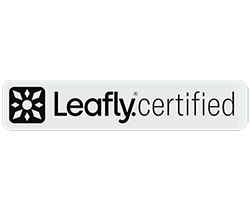Δ9-tetrahydrocannabinol (d9-THC) is a federally illegal Schedule I drug, however, one of its isomeric sisters, Δ8-tetrahydrocannabinol (d8-THC), is not. With this, many questions arise about why one of these compounds receives so much scrutiny from the federal government and the other does not. Throughout this blog, we will delve into those nuances to help provide a more clear understanding of the legality, chemical composition, and the pharmacological properties of these two similar, yet different compounds.
Understanding the Federal Legality of d9-THC and d8-THC
When referencing the federal legality of different forms of THC, it is important to remember that as result of a loophole found in the 2018 Farm Bill, d8-THC has not been categorized as federally illegal. However, d9-THC, which is the main psychoactive component in cannabis, is currently federally illegal and regulated as a Schedule I drug. The scheduling of this compound means that it has been deemed to have a high potential for abuse and has no accepted medicinal uses. There has been some discussion surrounding the addition of other THC isomers, such as d8-THC and d10-THC, to the drug scheduling list, however, at this time, there has been no movement on that. Additionally, d9-THC is currently being considered for rescheduling or de-scheduling, which would change the federal framework for legalization and regulation of the compound. Even though d9-THC is illegal at a federal level, many states have cannabis programs that allow for the sale and consumption of this compound for medicinal or recreational uses, however, there are strict regulations and guidelines surrounding the sale of these products, including extensive cannabis testing from a third party laboratory. Alternatively, since d8-THC is not federally illegal or regulated, the sale and consumption of this THC isomer can occur without any oversight and these products are often found at local gas stations, smoke shops, and even for purchase online. In recent years, there have been more instances of states banning or regulating d8-THC products. Some of the states with a d8-THC ban include Alaska, Delaware, Mississippi, and Rhode Island, while states such as Louisiana, Virginia, and Tennessee allow for d8-THC to be produced and sold if it meets specific regulations.
Understanding the Chemical Composition of d9-THC and d8-THC
As previously mentioned, d9-THC is the main psychoactive cannabinoid within cannabis, and once converted from the acidic form, tetrahydrocannabinolic acid (THCa), it normally represents the highest concentration of cannabinoids present in the plant. d8-THC is similar in the fact that it also has psychoactive effects, however, it does not occur naturally in the plant at appreciable concentrations. One of the major points of contention surrounding d8-THC is that the compound can be synthesized by converting d9-THC using a high temperature and acidic conditions, however, it can also be created by conducting the same process with CBD, which is where the loophole regarding its federally legality came from. After the 2018 Farm Bill, hemp producers and providers used CBD to create d8-THC products and began marketing them as legal, since they were created from hemp and not cannabis. This has created quite a bit of controversy between cannabis and hemp markets, because while d8-THC can be created from CBD, it is more similar to d9-THC regarding its chemical and pharmacological properties.
Image Credit: highnorth
When comparing the physical composition of d9-THC and d8-THC, the only difference in the chemical structure originates in the location of the double bond. As highlighted in the image above, d9-THC has the double bond located between the 9th and 10th carbon, while d8-THC has the double bond present between the 8th and 9th carbon. The location of the carbon double bond makes the d8-THC isomer more thermodynamically stable than d9-THC, which means that it is less likely to oxidize into cannabinol (CBN) during storage. However, because this isomer must be made synthetically and does not naturally occur, several questions arise regarding the purity and safety of the compound. When synthesizing d8-THC, there is a high possibility that impurities are being created, some of which may have negative side effects to the human body. However, until more extensive research can be done, consumers are left to make decisions on their own regarding which of the THC isomers they would like to use, and because d8-THC is more readily accessible, consumers often opt for purchasing these products.
Understanding the Pharmacological Properties of d9-THC and d8-THC
In addition to structural similarities, both d9-THC and d8-THC have a binding affinity for CB1 and CB2 receptors, which are two cannabinoid receptors that have been extensively studied. The CB1 receptor is known to be responsible for the psychoactive effects that are felt by consumers, while the CB2 receptor is known to be involved in immunosuppressive and anti-inflammatory actions. Current research suggests that d8-THC has less binding affinity to the CB1 receptor than d9-THC, but more binding affinity to the CB2 receptor. Thus, the overall efficacy of d9-THC and d8-THC are very similar. However, due to the variations in the specific binding affinity of each isomer, d8-THC shows less activity than d9-THC, and therefore is reported to have slightly less effective pharmacological properties.
Image Credit: News Medical Life Sciences
Due to the structural similarities and the similarities in affinity for the CB1 and CB2 receptors, d9-THC and d8-THC have similar pharmacological properties, which means they have similar therapeutic uses. Both compounds have been shown to reduce pain and inflammation, help with nausea and vomiting, stimulate appetite, and even reduce the intraocular pressure that is seen with glaucoma. However, because of the differences in the affinity for the CB1 and CB2 receptors between the two isomers, more d8-THC is needed for consumers to experience the same pharmacological effects as they would with a smaller dose of d9-THC. This, in addition to potential impurities that may impact the effectiveness of the compound, may explain why d8-THC products that are on the market often contain higher amounts of THC than a similar product that contains d9-THC. Users have also reported that the high obtained when using d8-THC products is milder than the one obtained when using d9-THC, which is supported by what is known about their pharmacological differences. In addition to having similar therapeutic uses, both d9-THC and d8-THC have similar negative side effects, some of which include dry mouth, paranoia, anxiety, red eyes, and short term memory problems.
Understanding the Consumer Impact
With a better understanding of the federal legality, chemical structure, and pharmacological properties of various THC isomers, consumers can make educated decisions about the products they are purchasing. After delving into the nuances of the similarities and differences between these two isomers, it is apparent that more research and regulation is needed for d8-THC in order to protect consumers. Over the last 10-15 years, the knowledge and understanding of naturally occurring cannabinoids, such as d9-THC, THCa, CBD, and CBN, has grown exponentially, however, there is not as deep of an understanding surrounding the synthetically made cannabinoids that are entering the recreational market.
References:
- Ashton, J. C., & Glass, M. (2007, June). The Cannabinoid CB2 Receptor as a Target for Inflammation-Dependent Neurodegeneration. Current neuropharmacology. https://www.ncbi.nlm.nih.gov/pmc/articles/PMC2435344.
- Drug scheduling. DEA. (n.d.). https://www.dea.gov/drug-information/drug-scheduling.
- Erickson, B. E. (2021, August 30). Delta-8-THC craze concerns chemists. Chemical & Engineering News. https://cen.acs.org/biological-chemistry/natural-products/Delta-8-THC-craze-concerns/99/i31.
- Goggins, P. (2021, March 31). What is delta-8?. Leafly. https://www.leafly.com/news/science-tech/what-is-delta8-thc.
- H.R.2 – 115th congress (2017-2018): Agriculture Improvement Act of 2018. (n.d.). https://www.congress.gov/bill/115th-congress/house-bill/2/text.
- Kaufman, A. (2023, April 29). Is delta-8 THC legal? here’s where (and why) the hemp product skirts marijuana laws. USA Today. https://www.usatoday.com/story/news/health/2023/04/29/is-delta-8-legal/11530893002/.
- Kruger, J. S., & Kruger, D. J. (2022, January 4). Delta-8-THC: Delta-9-THC’s nicer younger sibling? – journal of cannabis research. BioMed Central. https://jcannabisresearch.biomedcentral.com/articles/10.1186/s42238-021-00115-8.
- Modern Canna. Modern Canna | MCS. (2024, January 13). https://moderncanna.com/.
- Pertwee, R. G. (2016). Known Pharmacological Actions of Delta-9-Tetrahydrocannabinol and of Four Other Chemical Constituents of Cannabis that Activate Cannabinoid Receptors. In Handbook of Cannabis. essay, Oxford University Press.



 Modern Canna
Modern Canna

